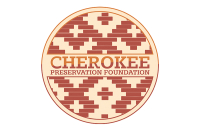War, God and children: Two unusual books
The adage “There are no atheists in foxholes” catches our attention, but is too broad and imprecise for universal application.
Gentry, Hill to present new works
Kristen Gentry and Halle Hill will read from and discuss their story collections, “Mama Said” and “Good Women,” at 6 p.m. Thursday, Feb. 27, at Western Carolina University’s Hunter Library (Room 186) in Cullowhee.
Live with a SEAL, and salute the first president
My oldest son runs ultra-marathons from time to time, whereas for me, an ultra-marathon is staying awake from 3 a.m. to 10 p.m. with just one nap. At any rate, this Christmas he gifted me with a copy of Jesse Itzler’s “Living with a SEAL: 31 Days Training with the Toughest Man on the Planet” (Center Street, 2016, 288 pages).
Junaluska teacher wins statewide award for teaching reading
Each year the North Carolina Department of Education travels across the state to recognize one district or school per region that stands out for their work and commitment to the Science of Reading.
Becoming aware of ‘emotional neglect’
I’ve always been a fan of psychology, especially when it comes in the form of self-help. Many times I have found answers I didn’t know I was looking for, or solutions that were far simpler than I expected.
‘Stories of the Saraha’ paints a vivid picture
Early in the 1970s, while living and working in Spain, Chen Maoping read a story in “National Geographic” about the Sahara Desert, and it captured her imagination. She became determined to live there.
Poet sets a new path for humanity
“In time, maybe the land will decide.”
Scott T. Starbuck is an award-winning poet, career fisherman, climate activist and longtime resident of the Pacific Northwest. His most recent book, “Bridge at the End of the World (New and Selected Poems)” is a culmination of his major published poetic output.
Encouraging the gift of a snail mail note
There’s no fool like an old fool.
Allow me to serve as a prototype of that adage. I’m old, three years past the Good Book’s allotted age of three score and ten, and now I have once more donned my jester’s motley and bells by making resolutions for the New Year.
Lessons from a reimagined winter fairy tale
When you’re a child, this time of year is full of magic and wonder. As you get older, the holidays can become more nostalgic than enchanting, with more sentiment than thrill. Finding that old spark isn’t impossible, but it’ll take more effort to revive it and perseverance to maintain it.
From book monsters to nuclear war
For all sorts of reasons, mostly having to do with research, the last two weeks brought more reading than usual my way, but with no single book finished for any possible review. One of these books, Pat Frank’s “Alas, Babylon” I read 58 years ago, while Anthony Esolen’s “Nostalgia” I needed I read just this last year.





